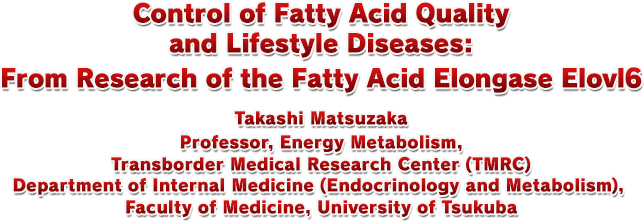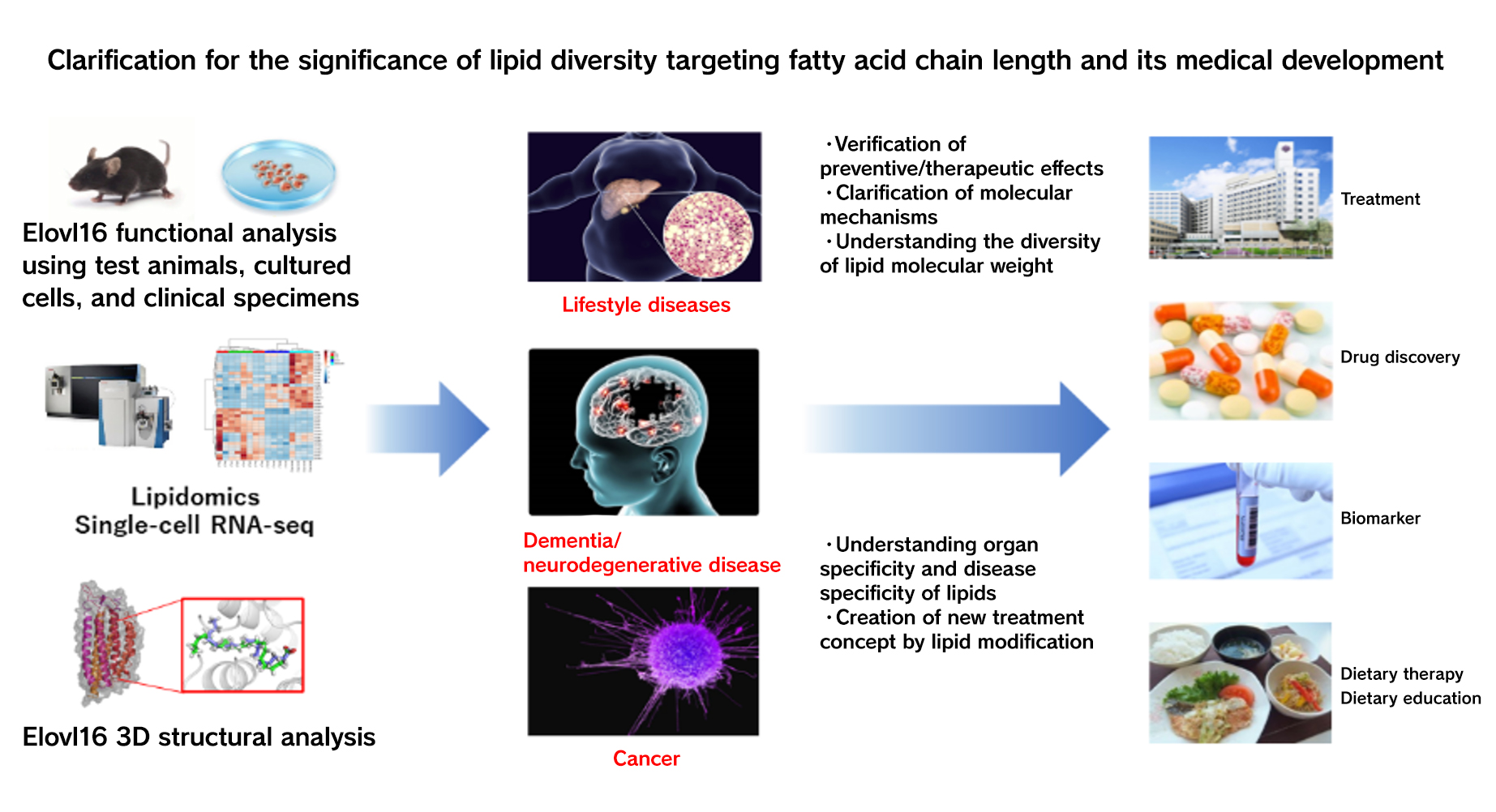

Obesity and type 2 diabetes associated with obesity are increasing worldwide. There is an urgent need to elucidate the related molecular pathogenesis and develop effective preventive and therapeutic methods. Fatty acids are essential for the vital activities of cells as components of biomembranes, regulation of biomembrane fluidity, energy sources, and raw materials for bioactive lipids. On the other hand, excessive accumulation of fatty acids leads to serious dysfunction of cells and organs. Obesity causes accelerated lipolysis due to excessive nutrition and insufficient insulin action, as well as excess lipid accumulation in the blood and organs due to activation of fatty acid synthesis. The dysfunction in cells and organs caused by such phenomena is called lipotoxicity. Various cell dysfunctions (insulin resistance, insulin secretory deficiency, mitochondrial dysfunction, inflammation, cell stress, etc.) caused by lipotoxicity have been proposed as the pathogenesis of type 2 diabetes. In recent years, research such as our own has discovered that metabolic syndrome involves not only the amount of accumulated fatty acids but also the quality of fatty acids, i.e., the chain length, degree of unsaturation, and composition.

My research group focused on the quality of lipids and cloned the ELOVL fatty acid elongase 6 (Elovl6) as a target gene for the lipid synthesis transcription factor SREBP. We clarified that this enzyme uses C12-16 saturated and monounsaturated fatty acids as substrates, and the C18 fatty acids stearic acid (C18:0), vaccenic acid (C18:1n-7), oleic acid (C18 :1n-9) as a lipogenic enzymes. Furthermore, from research using Elovl6-deficient mice and tissue-specific Elovl6-deficient mice, we have obtained the following findings regarding the relationship between the physiological role of Elovl6 and metabolic syndrome.
- 1)In each organ of Elovl6-deficient mice, stearic acid and oleic acid decrease and palmitic acid, palmitoleic acid, and vaccenic acid increase compared to wild mice.
- 2)When feeding Elovl6-deficient mice with a high-fat diet, ameliorate insulin resistance improves to a level similar to wild mice, despite obesity and fatty liver. This is because changes in fatty acid composition in the liver retain insulin receptor substrate (IRS)-2/Akt signaling and suppress the diacylglycerol/PKCε pathway.
- 3)Causing a deficit of Elovl6 in type 2 diabetes model db/db mice increases the amount of pancreatic β-cells and insulin secretion, which suppresses the onset of type 2 diabetes. In terms of the mechanism, inhibition of Elovl6 is thought to maintain compensatory insulin secretion associated with obesity by reducing saturated fatty acids that have a longer chain length than palmitic acid and are more toxic, and by reducing oleic acid, which impairs insulin secretion.
- 4)Elovl6 is important for the regulation of ceramide side-chain length in the liver. Liver-specific Elovl6-deficient mice show reduced C18:0-ceramide, which leads to decreased protein phosphatase 2A activity and increased insulin sensitivity.

Results from research on Elovl6-deficient mice and liver-specific Elovl6-deficient mice indicate that alterations in Elovl6-regulated fatty acid quality have important implications for the pathogenesis of type 2 diabetes. If it is possible to appropriately control the quality of lipids that accumulate in obesity through appropriate intervention in the fatty acid synthesis system targeting Elovl6, it may be possible to develop new preventive and therapeutic methods for lifestyle diseases. Research on this theme is expected to increase even further.
|